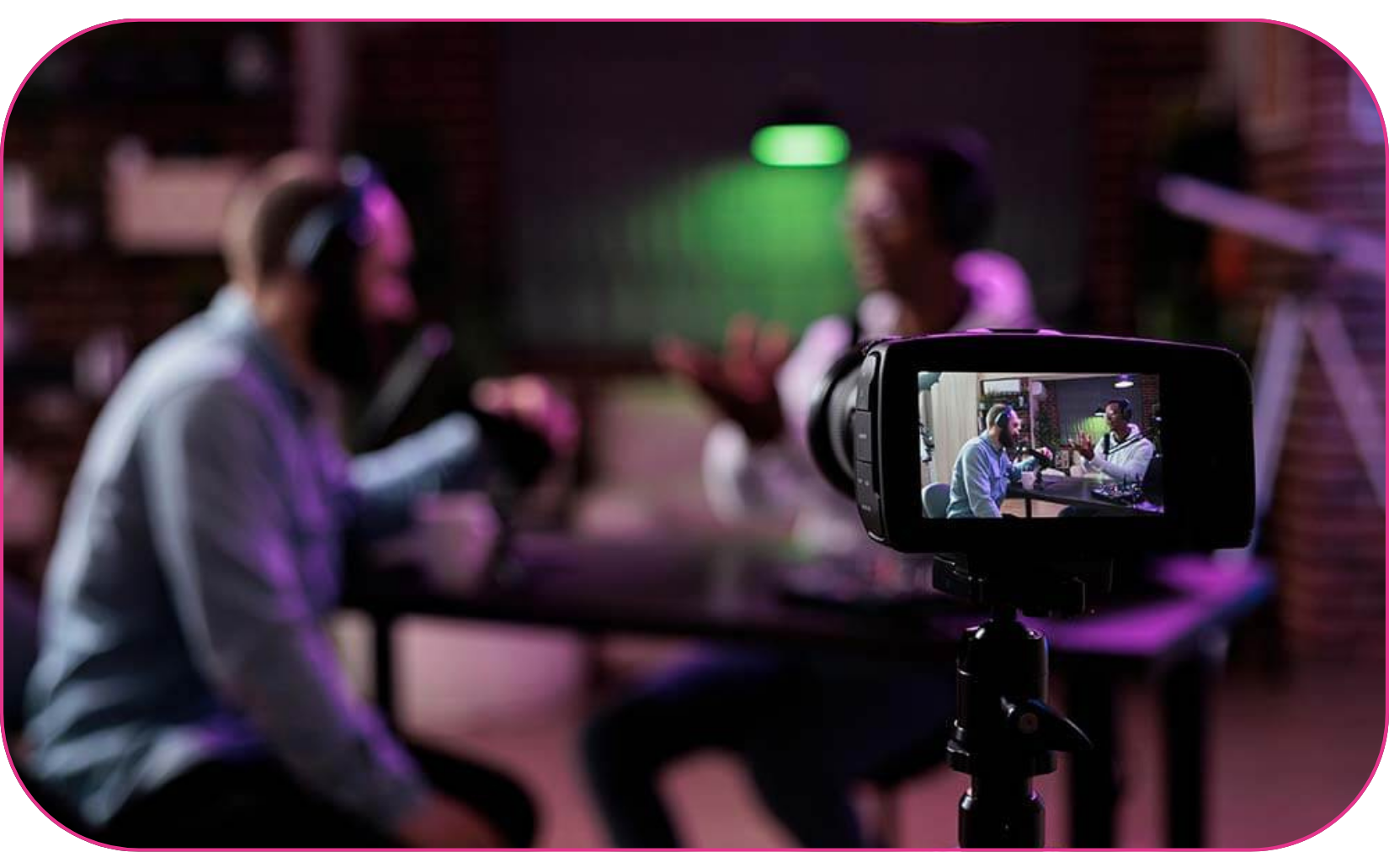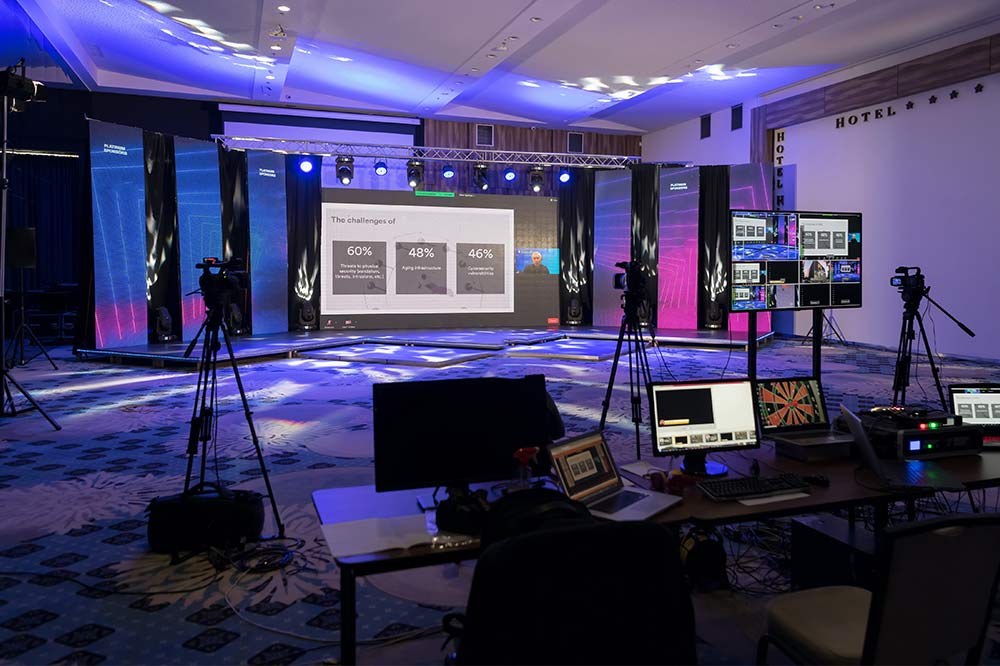We’re still well in the throes of the COVID-19 pandemic, and even as businesses work to reopen, we’re seeing more and more physical events moving online.
Whether it’s because organisations don’t want to put attendees and staff at risk, or they’re coming around to the benefits of hosting online events in their own right, online events are looking like they’re here to stay.
But, even the most experienced marketing and events teams can find it difficult to transition in-person events to the virtual environment. Why? Well, as much as online events try to replicate the in-person experience, there are important differences in the way they’re organised and run.
The shift to virtual events
When looking to transition their in-person event online, most organisations gravitate towards virtual events. In this case, when I talk about virtual events, I’m talking about large, multi-session online events. Virtual events can be as simple as offering a few webinars with a breakout room experience for your audience, or these can be scaled to create a complex, multi-session day full of options and experiences for your audience. They often use a mix of webinars, webcasts, and live, simulive or on-demand content that is available to access on a set schedule. Think of a virtual conference or virtual trade show.
The case for webinars
While there are numerous benefits to large-scale virtual events, they can be quite cumbersome to create and run. They are ideal for those large-scale events that are either going to see a high number of attendees or that are going to run a strict schedule of a number of different sessions.
But, is there a simpler way to host your in-person event online? Yes!
I’ve found that in the rush to move online, many organisations overlook a simple, straight forward option for their events - webinars. In this instance, I’m referring to online seminars that normally take the form of a digital presentation - whether that be a PowerPoint, webcam, screenshare, pre-recorded mp4 (or a mixture!) - with accompanying audio via a phone or mic, to accommodate panel discussions, etc. It’s a simple and effective way to communicate. Even better, it’s a super flexible event type that can easily stand-in for a physical event.
While a lot of organisations are looking to take multi-day conferences online, others are looking for options for smaller panel discussions, or thought leadership platformss. These types of events can be easily transitioned to a live or simulive webinar.
Do you want to transition your panel discussion online? A webcam-style webinar would work really well. Most webinar platforms, like WorkCast, have the functionality to allow multiple presenters on webcam. You can even use screen share or slides, tool.
Another benefit of a webinar versus a virtual event, is that there is a lot more flexibility with the attendee experience. That’s not to say that virtual events aren’t flexible, but because they can include complex functionality, it can be harder to, say, embed the event in to your own website. With a standard webinar, embedding the event experience in your own CMS is fairly simple and you don’t lose much functionality. This means you can essentially make the event an extension of your website, even hosting it on your own URL (this can be done with platform specific pages too, but can sometimes be complex and costly).
How to turn your in-person event into a webinar
Like multi-session virtual events, the key to turning your event into a webinar is planning. Putting in the effort ahead of time will help your webinar or webinar programme run more smoothly. Here are a few key steps to get you started:
- Set your goals: Why exactly are you running your online event? What do you want to get out of it? This will help solidify whether a webinar is right for your event. In most cases, it will be, though goals like attendee networking might be more conducive to a virtual event setting.
- Pick your speakers: Just like with an in-person event, this is an important aspect of your webinar. Your speakers will need to appeal to your audience and also be free on the day of the conference. If you’re running this as a single day session, you’ll also want to ensure you have an experienced moderator who can guide attendees through the sessions and programme.
- Set your programme: As with an in-person event, you want to put together your programme ahead of time. Especially if you’re going to be running your event as a webinar, you’ll want to ensure you’re not setting sessions to run at the same time, that you’ve provided enough breaks for your attendees, and that your speakers will be available to answer questions.
- Decide on your content type: By this I mean, are you going to run your sessions as live, simulive, or on-demand. There are benefits and drawbacks to all three content types, so you’ll want to determine what works best for you and your speakers.
- Build your event: Part of this will be to ensure you’re using the right webinar platform for your event. Ensure that you have all the functionality you need - i.e. chat, polls, surveys, analytics - and that all of this is set out when you’re starting. Then you can actually start the physical build.
- Promote: As soon as your registration link is live you can start promoting your virtual conference. While it will be fairly similar to promoting a physical conference, focus mainly on your digital channels. Also, ensure you communicate the structure of the event clearly. All of your sessions will be run in the same auditorium (landing page) and attendees will have to be aware of the start time of each individual session.
- Practice: Make sure any presenters and moderators practice, even if they’re pre-recording. You don’t want to waste your precious time rerecording a hundred times. It will be especially important for the moderator to know their cues i.e. when each speaker is finished and when they will need to jump in and guide the session. You may also want to have your speakers practice with example questions so they get used to having to think on their feet.
- Follow-up: Once your event is over, that doesn’t mean the work is done. You’ll want to ensure you follow-up with all attendees and registrants. Keeping them engaged means they’re more likely to attend your next event and engage with your brand as a whole.
What does this type of webinar look like?
It can sometimes be hard to visualise an event when you haven’t attended one like this before.
There are some great examples out there of larger scale webinars, that are essentially virtual event-light, but here is what an example schedule may look like:
When it comes to transitioning your in-person event online, the most important piece of advice I can give you is to not over-complicate it - sometimes a webinar will do. In fact, in many cases it will give your audience a better experience entirely.
The important thing to remember is your audience - they are priority number one, so approach any planning with them in mind. If you keep these tips front of mind, you’ll be able to transition your in-person event online easily.
Sort fact from fiction. Download the free eBook now.
Learn how to run incredible webinars with our Ultimate Webinar Handbook.
Share this
You May Also Like
These Related Stories

Webcasting 101: How Does Webcasting Work
Virtual Events Vs. In-Person Events: Why to Host Online



-2.png?width=500&name=TEMPLATE_%20eBook%20website%20images%20984x600%20(4)-2.png)
